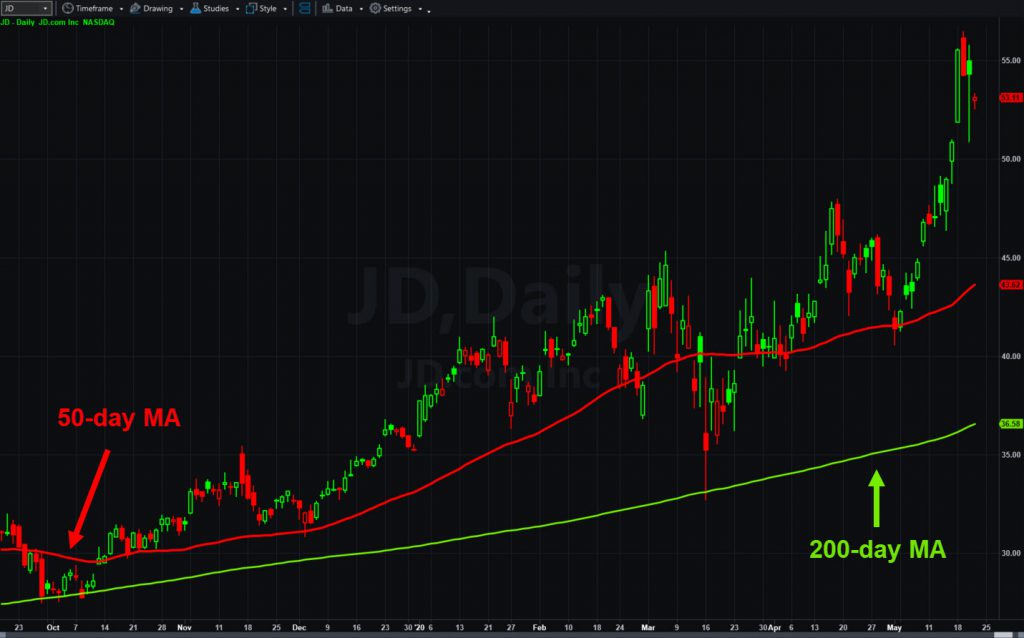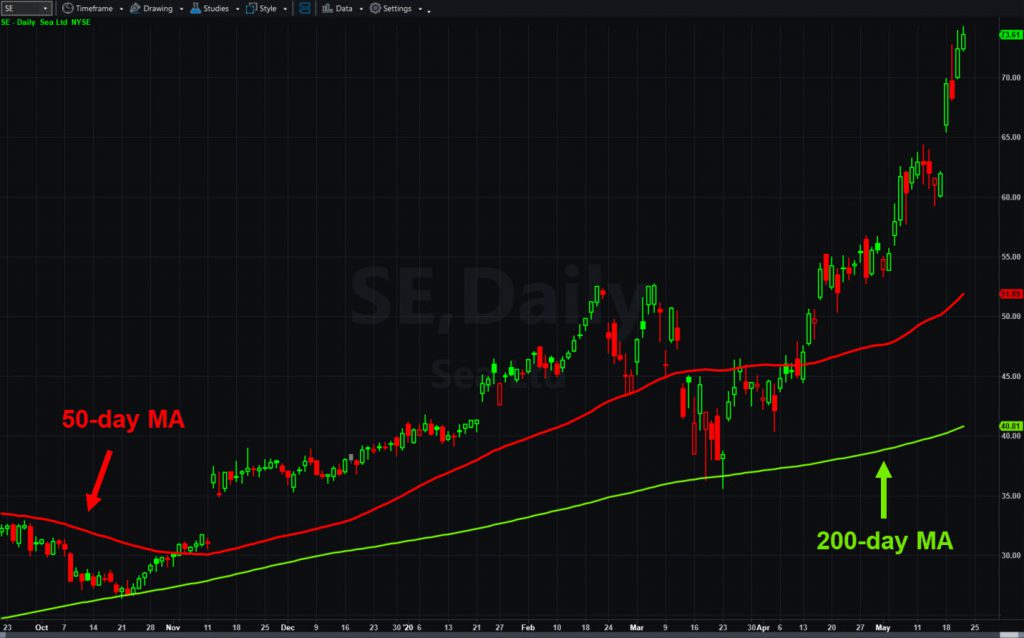Earnings season is pretty much finished, and the main story wasn’t Covid-19. Instead, it was the complete dominance of e-commerce and cloud computing.
Megacap Internet companies like Amazon.com (AMZN), Facebook (FB) and Alphabet (GOOGL) climbed on strong results. They were joined by mid-sized firms like PayPal (PYPL), Square (SQ) and Shopify (SHOP). Ditto for smaller companies like Wix.com (WIX), Match (MTCH) and Mercadolibre (MELI).
Almost everywhere you look, companies are riding the wave. Even non-tech firms like Walmart Stores (WMT), Lowe’s (LOW) and Target (TGT) have reinvented themselves as digital business for the age of social distancing.
Beyond simple e-commerce, there’s been a surge in related cloud computing: Zoom Video Communications (ZM), Twilio (TWLO), Microsoft (MSFT). Plus, cloud-based entertainment: Netflix (NFLX), Activision Blizzard (ATVI) and Sea (SE).
The result? Even with the economy suffering from coronavirus, the Nasdaq-100 ($NDX.X) closed yesterday just 3 percent below its previous peak. It’s now erased more than 90 percent of its selloff between February 21 and March 23.

JD.com, Baidu and Sea
Two of the biggest movers in the last week were Chinese e-commerce firms. JD.com (JD), which sells directly to consumers and supports independent merchants, beat across the board. The combination of an ongoing business turnaround and coronavirus reducing the need for promotions drove the stock to a new record high.
“Strong user growth during the first quarter reflects consumers’ increasing reliance on JD.com to support every aspect of their lives,” CEO Richard Liu said in the release.
Search-engine Baidu (BIDU), “the Google of China,” also spiked on a strong report. Trapped near long-term lows after years of heavy spending to upgrade its technology, BIDU beat estimates for at least the third straight quarter. Margins improved as mobile monetization improved. Its community of original-content creators nearly tripled, as well.
By the way, if you’re interested in Chinese technology companies, Alibaba (BABA) reports tomorrow morning.
SE, the Singapore e-sports giant, also shot to new highs after coronavirus glued Asian gamers to their computers. Revenue crushed estimates as active users rose 48 percent. Management took advantage of its 97 percent rally from the March lows to issue new shares.
Never heard of SE? It went public 2-1/2 years ago and is already 30 percent bigger than Twitter (TWTR).

Expedia: Not as Bad as Feared
The biggest major mover in the U.S. was Expedia (EXPE). Results were mixed, with revenue inching past estimates. But more importantly, it gained on hopes of travel rebounding as life returns to normal.
The last week also featured quarterly reports from four of the largest traditional retailers in the U.S. TGT stood out the most because it successfully doubled its online sales. However shoppers switched to lower-margin staples over more lucrative products like apparel. It was the company’s second straight quarter with weak profitability trends.
How long before analysts start to question CEO Brian Cornell’s grand strategy — especially when peers like are succeeding? WMT, for instance, reported a stunning 10 percent same-store sales growth. Its ability to sell groceries via app has also resulted in a much wider customer base.
Digital sales at LOW rose 80 percent, driving profit and revenue ahead of forecasts. The shares didn’t do much because they rallied into the report. It turns out home improvement enjoyed a surge of demand during the lockdown. Home Depot (HD) followed the same trend.
In conclusion, coronavirus had a massive impact on society and economy. But the pandemic also came at a time when businesses were already shifting to the Internet and cloud computing. As a result, the pain in the stock market wasn’t nearly as bad as it might have been.


























